This post may contain affiliate links, which means I get a small percentage of the sale at no extra cost to you. I only recommend items I love and have had a positive experience with. Thank you!
If you want to experience the health benefits or unique flavor of lavender, take a look at lavender extracts and tinctures. I’ll show you how to make your own lavender extract and tincture at home in a few simple steps.
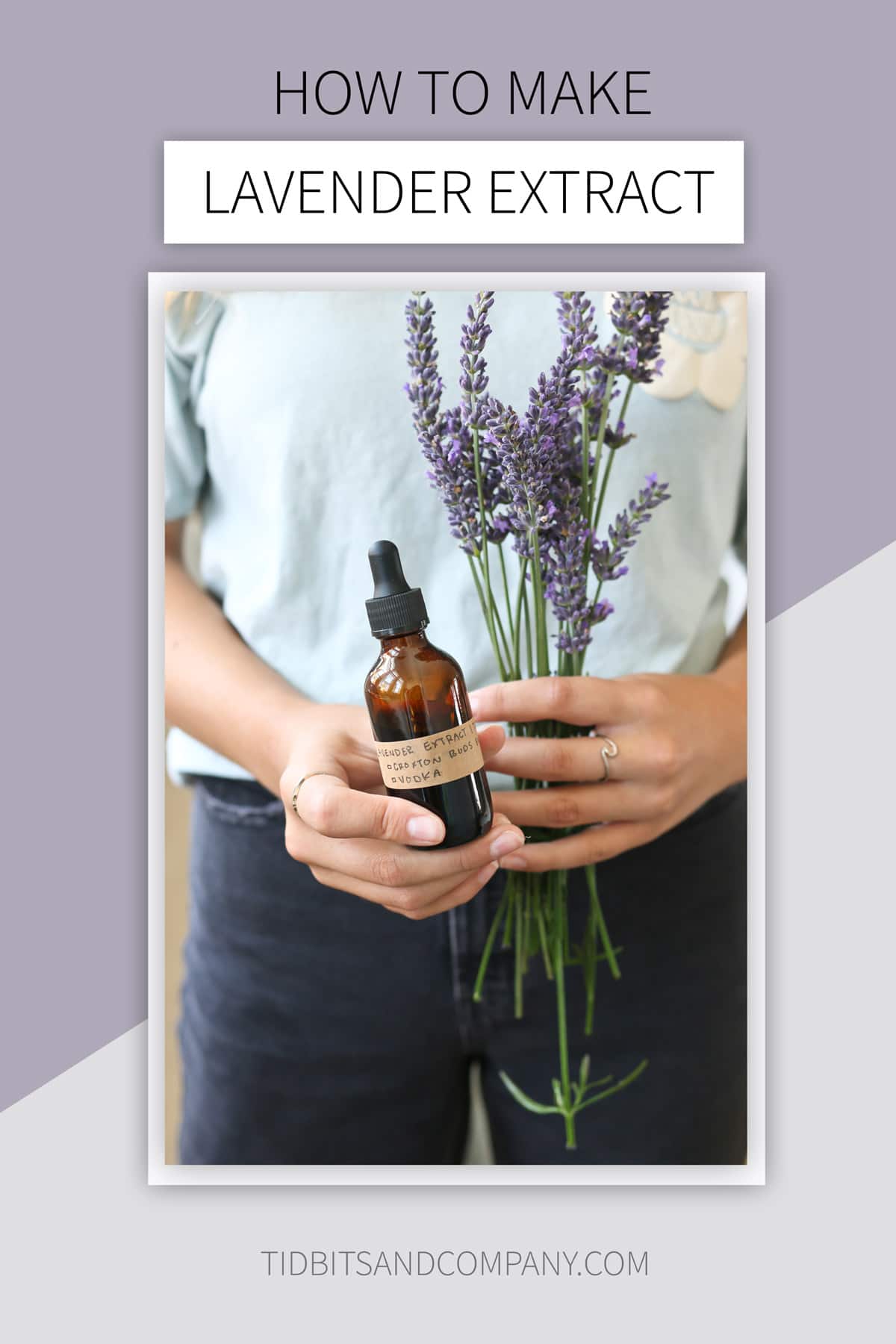
Hello, my friends! I’m very excited to be sharing some more information with you about how we can benefit from lavender. As you may know, lavender is an amazing herb! It’s one that many people are familiar with because of its beautiful and calming fragrance.
What some people may not realize however, is that lavender can also be beneficial to our health. Lavender can help relieve stress, improve sleeping, alleviate pain, and reduce inflammation, just to name a few!
Lavender is also a fantastic culinary ingredient that can add great flavor to cookies, cakes, breads, ice cream, drinks, and more. If you haven’t tried any recipes with lavender, you’re missing out! Lavender is a very useful plant.
We grow several types of lavender here on our lavender farm. We use that lavender in a variety of ways and for different purposes.
One of the ways we use lavender is to make lavender extract and tinctures. Today, I wanted to talk with you about lavender extract and lavender tinctures. I’ll explain to you what they are, the difference between the two, and how to make them. I’m also including a printable recipe card for any who would like to try making lavender extract or tinctures for themselves.
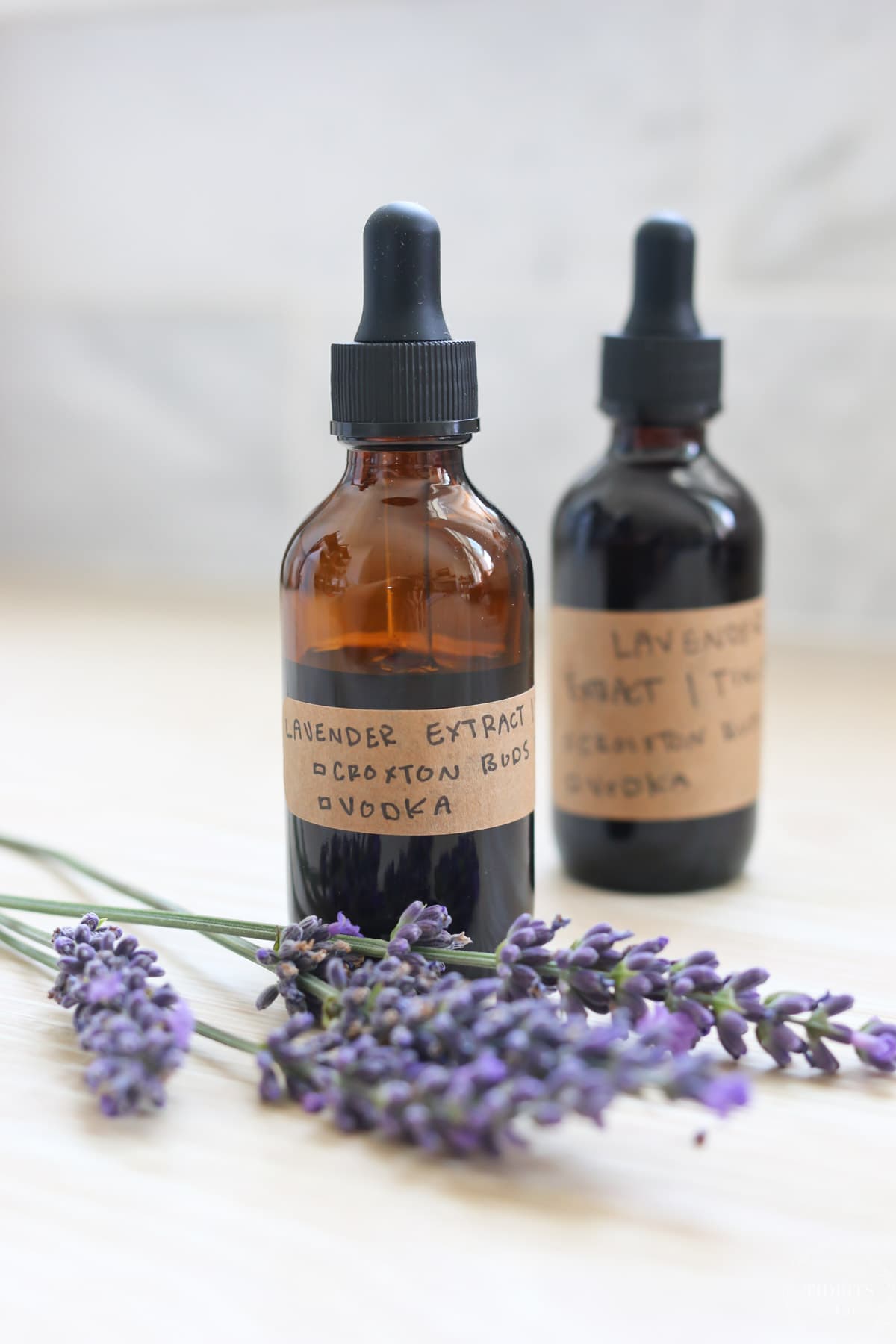
Table of contents
- What are Lavender Extracts and Tinctures?
- How are Extracts Used?
- How are Tinctures Used?
- How are Extracts and Tinctures Made?
- Folk Method for Making Lavender Extract and Tincture
- Lavender Extract/Tincture Made with Alcohol
- Lavender Extract/Tincture Made with Water and Glycerin
- Using Your Lavender Extract/Tincture
- Frequently Asked Questions
- Learn More About Lavender
What are Lavender Extracts and Tinctures?
Some of you may know just about everything when it comes to extracts and tinctures, but for those who are new to this idea, allow me to give a brief explanation.
Extracts and tinctures are the same product. They are both liquid extracts made from an herb. The difference between the two is why and how you use them.
An extract will be used to flavor foods and will be consumed in a small amount. A tincture will be used medicinally for health benefits and is taken in larger amounts. But remember, lavender extract and tinctures are still the same product, just used in different ways.
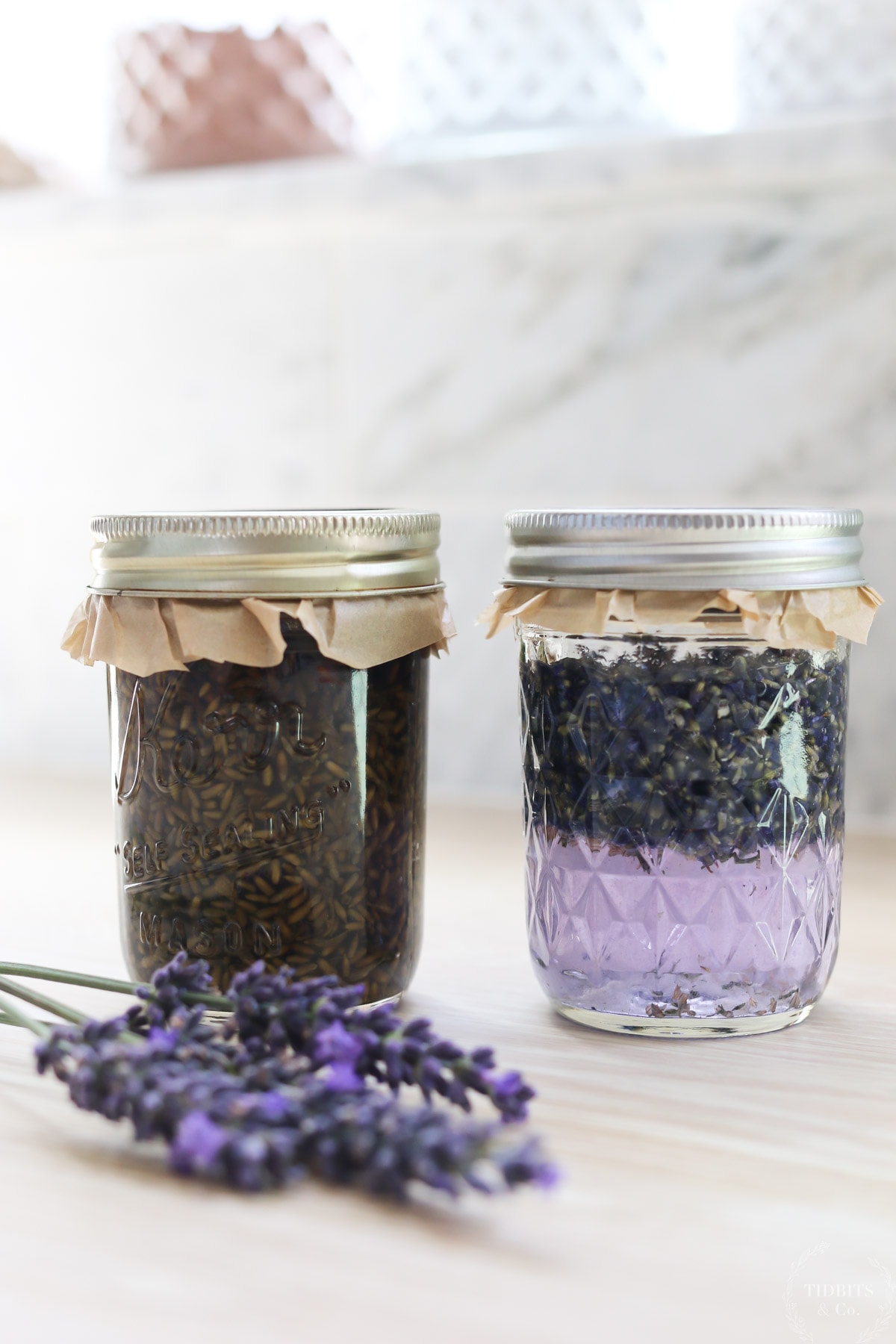
How are Extracts Used?
Like I mentioned earlier, extracts are mainly used to flavor food. Think of your standard vanilla extract. It’s usually added to a recipe before baking to enhance and add flavor.
Our homemade lavender extract will work that same way. Lavender extract can be used to flavor beverages, cakes, cookies, ice cream and so on. Lavender extract makes any dish unique and flavorful! You can check out my list of 20+ Recipes with Lavender if you want some great ideas to give you a jumpstart on using lavender in the kitchen.
How are Tinctures Used?
Tinctures are used medicinally for their health benefits. The health benefits of lavender include things like reduced inflammation, improved mood, pain reduction, and better sleep, just to name a few.
Tinctures are either taken orally or applied to the skin and are going to be used at a higher dosage rate. Think of tinctures as a liquid health supplement rather than as an ingredient to flavor food.
How are Extracts and Tinctures Made?
When making any herbal extract, the aim is to draw out the desired properties of an herb. This could be beneficial compounds, medicinal properties, flavor, or aroma. A solvent such as alcohol or water is the liquid used to soak the herb and draw out those wonderful properties.
In this case, our extract and tincture will be made from lavender. I’ll show you how to make your extract or tincture using an alcohol solvent as well as how to make one using a water and glycerin solvent.
Lavender extracts and tinctures are easy to make, so let’s look at how it’s done.
Folk Method for Making Lavender Extract and Tincture
For our lavender extract and tincture, we’ll be using the folk method to guide our recipe. The folk method focuses on ratios or proportions rather than on exact measurements. This makes it easy for you to make as little or as much lavender extract or tincture as you desire.
Make sure you are using culinary or food grade lavender for your lavender extract/tincture. Culinary lavender is bred for consumption, but not every lavender variety is food grade. You’ll want to know what type you have before you begin this project. You can purchase some great culinary lavender from Mountain Rose Herbs. You can also find culinary lavender at Amazon.
Lavender Extract/Tincture Made with Alcohol
Lavenders extract or tinctures made with alcohol are simple and easy to make. The advantage of using an alcohol base is mostly that the shelf life of the extract/tincture is much longer than that of the water and glycerin extract. An extract made with an alcohol base will last 2-3 years.
For an extract/tincture made from alcohol, I recommend using something like Smirnoff 80 proof vodka. You can purchase some at your local liquor store.
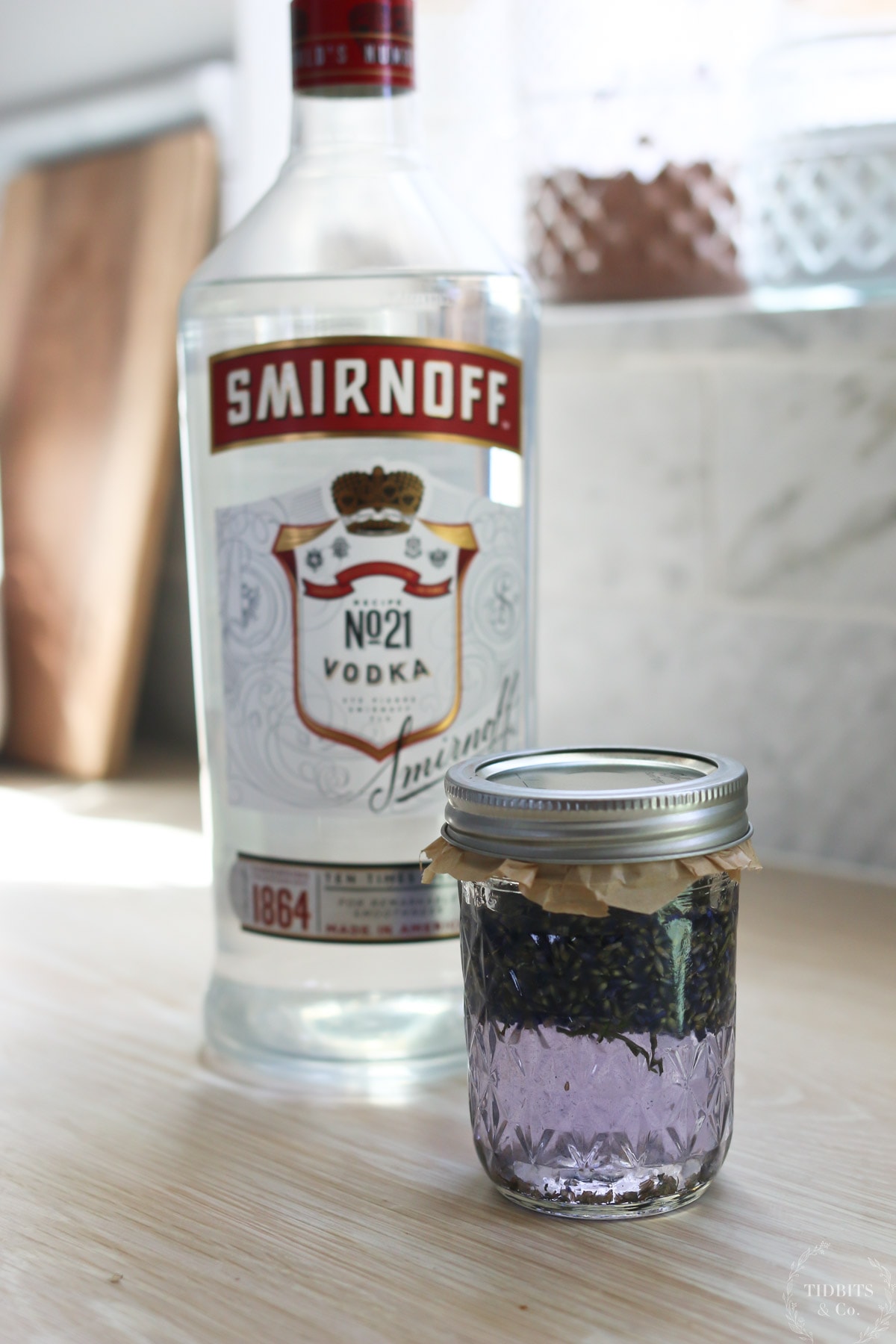
Here is how it’s made:
- Fill a glass jar of your choice 1/3 full of dried lavender buds.
- Fill the jar up the rest of the way with the alcohol, leaving about an inch of head space at the top.
- Cover the opening of the jar with parchment paper and then attach the metal lid. Alcohol will eat away the metals from a metal lid, so you don’t want direct contact between the two.
- Label the jar with the contents, start date and end date.
- Place your jar in a cool, dark cupboard for 4-6 weeks. The liquid in your jar should be a dark brown by the time it is done. You may need to top it off with more alcohol the day after if the dry herbs have swollen and are no longer submerged.
- Give your jar of extract/tincture a good shake each day to help mix it up.
- When the 4-6 weeks are finished, strain the extract/tincture and transfer it to a convenient bottle for use. Keep your extract/tincture stored away from direct sunlight.
Lavender Extract/Tincture Made with Water and Glycerin
Lavender extract or tincture can also be made without alcohol. For the non-alcoholic version, we’ll use water and glycerin as our extraction ingredients. Using this method will give a sweeter flavor to your finished extract.
The shelf life of lavender extract made with water and glycerin is shorter than those made with alcohol, but it is a good option for people who need or want to avoid the alcoholic version. Lavender extract/tincture made using this method will keep for 6 months – 1 year.
If you choose to make your extract/tincture with glycerin, make sure that you check your glycerin label. Some types of glycerin are not meant for consumption. You’ll want any glycerin you use for your extract/tincture to be food grade. I like to use this food grade glycerin from Azure Standard. It’s one of my favorite products to buy from Azure Standard.
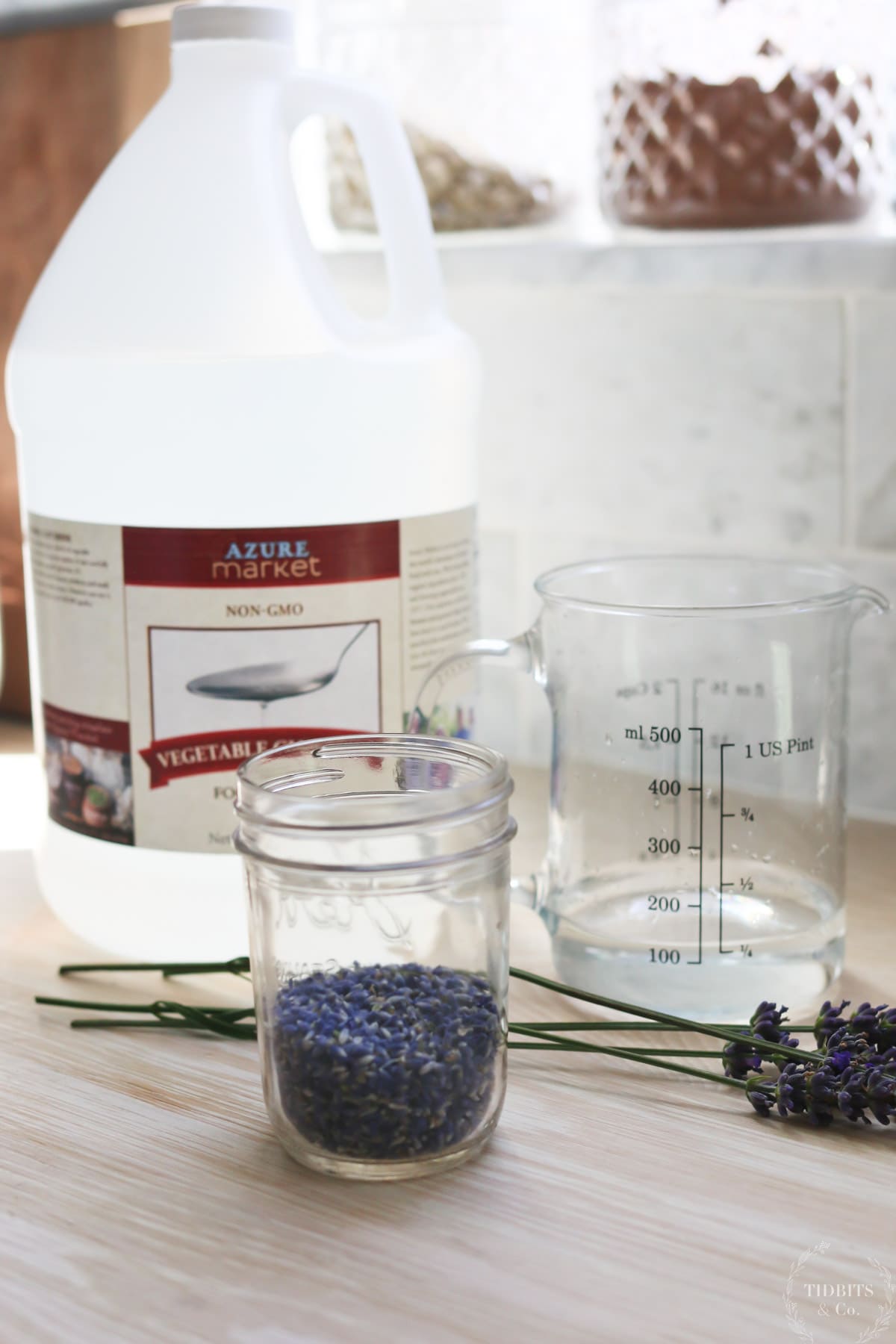
Here are instructions for Lavender extract/tincture made with glycerin and water:
- Fill a glass jar of your choice 1/3 full of dried lavender buds.
- Fill the jar up another 1/3 with the glycerin. Stir and coat all lavender buds with glycerin.
- Fill the remainder of the jar with water, leaving about an inch of head space at the top. Stir again.
- Cover the top of the jar with parchment paper and then a metal or plastic lid.
- Label the jar with the contents, start date and end date.
- Place your jar in a cool dark cupboard for 8-12 weeks, shaking daily to combine the oil and water. The liquid should be a dark brown when finished.
- When your 8-12 weeks is finished, strain your extract and transfer to a convenient bottle for use. Store your extract away from direct sunlight.
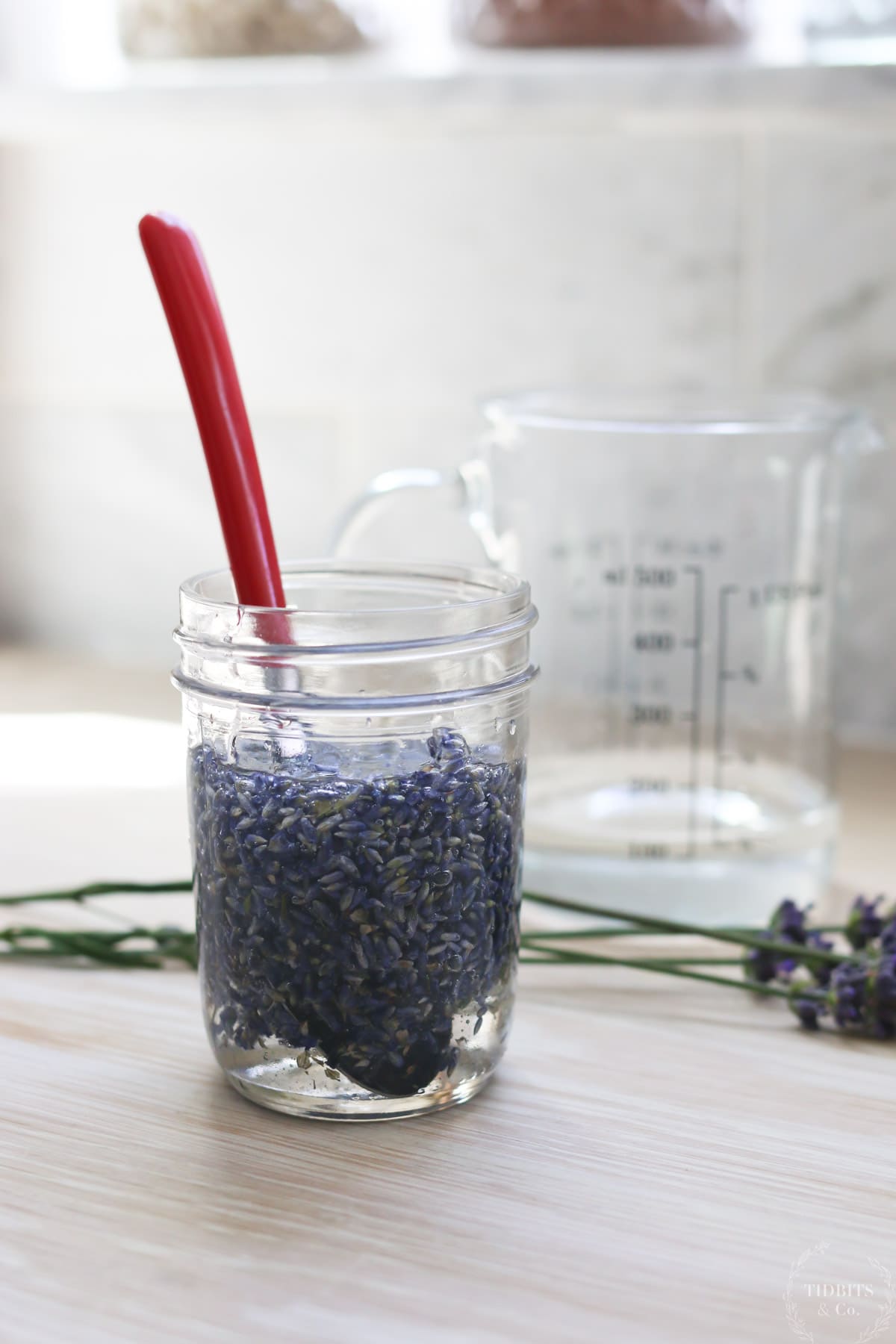
Using Your Lavender Extract/Tincture
Now that you’ve made your own lavender extract/tincture, it’s time to put it to good use.
Pure lavender extract can be used in a variety of culinary applications. Your lavender flavor extract will taste fantastic in dessert recipes! Try some lavender cookies, lavender lattes, lavender berry jam, lavender lemon bars, or make a lavender simple syrup to flavor your favorite beverages.
I’ve got a whole list of 20+ recipes with lavender that you can try!
You can also use your lavender extract medicinally as a tincture. Apply some of your natural extract/tincture topically to your skin to treat conditions like inflammation or pain. You can also take your tincture as a supplement by dropping a few drops under your tongue or adding a dropper of the tincture to water or your herbal teas.
*Please note, I am not a medical professional and please consult your physician before consuming.
Regardless of how you use your extract/tincture, you’ll be able to experience the wonderful benefits of lavender!
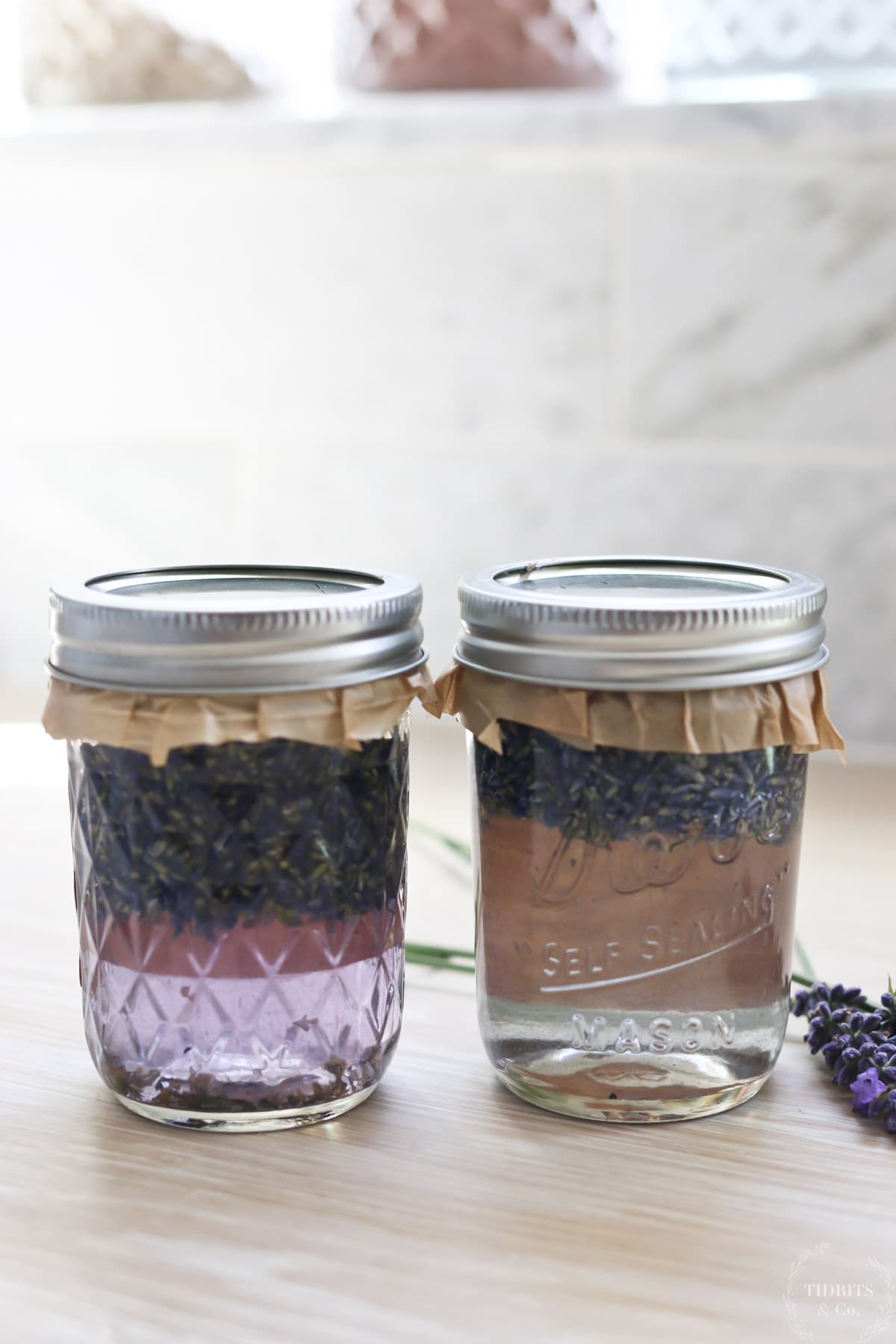
Frequently Asked Questions
Lavender oil is made by extracting the natural oils from lavender plants using steam. Lavender oil is more highly concentrated and potent than lavender extract. You will find some lavender oils that are meant for culinary use, but not all are. Be sure to check your labels before consuming lavender oils.
You can use both lavender oil and extract to flavor food as long as the lavender oil is culinary or food grade. Culinary lavender oil is more concentrated and therefore, you’ll use it very sparingly. You need to be precise in measurements when you use lavender oil so that you don’t overpower the other flavors in your recipe.
Lavender extract can be used larger amounts and is therefore a bit easier to control. It has a milder taste that is less likely to overwhelm the other flavors in your recipe.
You can find a lot of flavors that pair well with lavender! Citrus flavors like orange or lemon taste great with lavender. Any berry, like strawberry or blueberry, is another good choice to pair with lavender. You could also try pairing lavender with chocolate, honey, mint or vanilla with lavender for a fantastic flavor combination.
I love to use glass dropper bottles for storing homemade extracts and tinctures. These amber dropper bottles and these amber extract bottles would both be perfect for this project.
And don’t forget to label those bottles! I like to use these brown sticky labels on my glass bottles.
Learn More About Lavender
I love lavender! It’s definitely one of my favorite herbs.
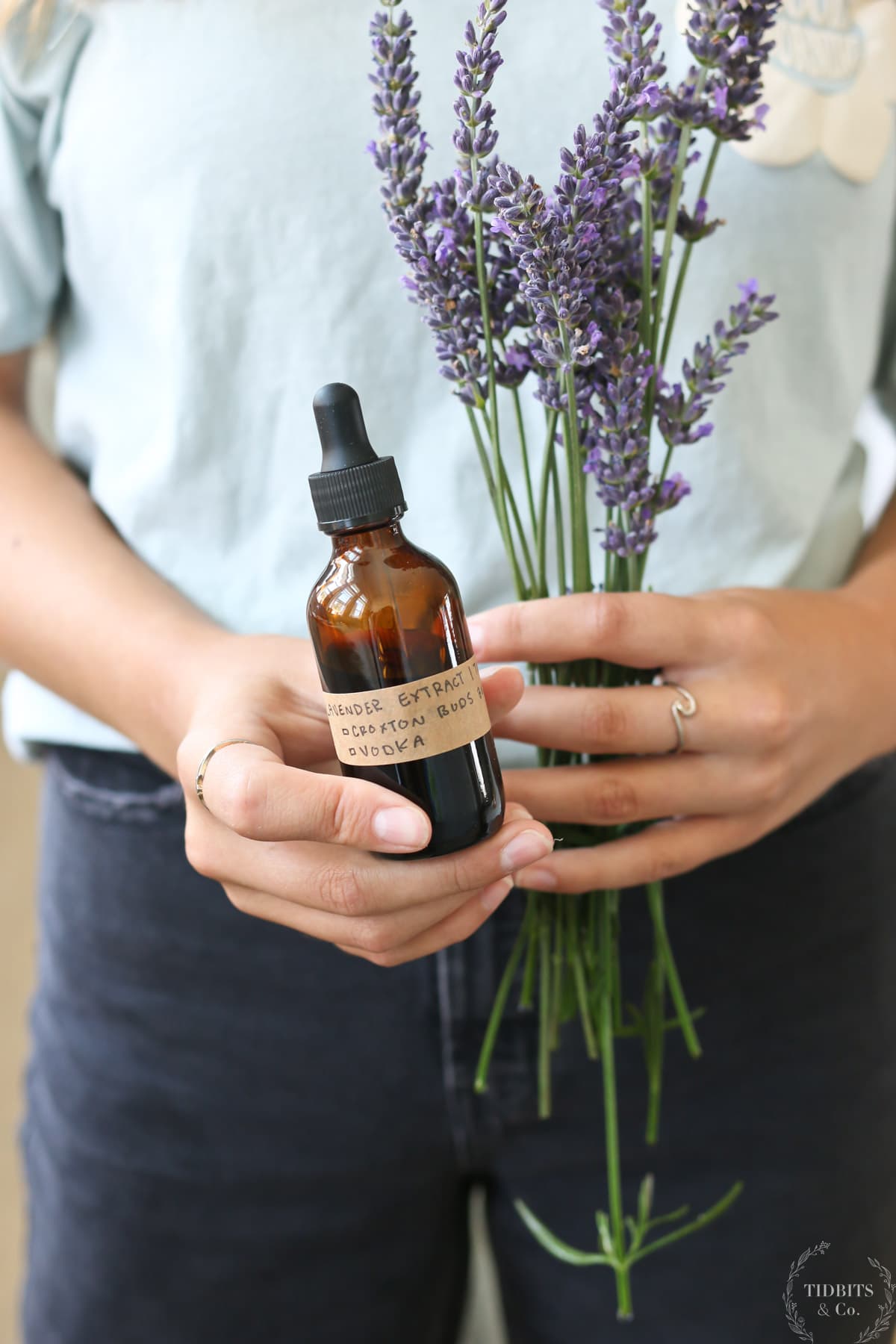
If you like learning about lavender or other herbs, I highly recommend you check out the Herbal Academy. They have fantastic courses that will teach you all about how to use herbs in your daily life. These classes are amazing, and I have been learning so much from them!
Feel free to take a look at some of my other lavender articles. Talk to you soon!
- 20+ Recipes with Lavender That You’ll Want to Try
- Easy and Healthy Lavender Berry Jam
- The Many Benefits of Lavender for Good Health
- The Beginnings of Our Lavender Farm
- 20 Ways to Use Lavender

Lavender Extract/Tincture Made with Alcohol
Ingredients
- 1/3 jar culinary or food grade dried lavender buds
- 2/3 jar 80 proof Smirnoff vodka or similar
Instructions
- Fill a glass jar your jar of choice 1/3 full of dried lavender buds.
- Fill the jar up the rest of the way with the alcohol, leaving about an inch of head space at the top.
- Cover the jar opening with parchment paper and then the metal lid. Alcohol will eat away the metals from a metal lid, so you don't want direct contact between the two.
- Label the jar with the contents, start date and end date.
- Place your jar of extract/tincture in a cool dark cupboard for 4-6 weeks, shaking daily. The liquid should be a dark brown. You may need to top it off with more alcohol the second day if the dry herbs have swollen and are no longer submerged.
- When 4-6 weeks is finished, strain your extract/tincture and transfer to a convenient bottle for use.
- Store your extract/tincture in a cool place away from direct sunlight.


Lavender Extract/Tincture Made with Glycerin and Water
Ingredients
- 1/3 jar dried culinary or food grade lavender buds
- 1/3 jar culinary or food grade glycerin
- 1/3 jar water
Instructions
- Fill a glass jar of your jar of choice 1/3 full of dry lavender buds.
- Fill the jar up another 1/3 of the way with the glycerin. Stir to coat all the buds.
- Fill the remainder of the jar up with water, leaving about an inch of head space at the top. Stir again.
- Cover the opening of the jar with parchment paper and then a metal or plastic lid.
- Label the jar with the contents, start date and end date.
- Place your jar of extract/tincture in a cool dark cupboard for 8-12 weeks, shaking daily to re-combine the oil and water. The liquid should be a dark brown when finished.
- When 8-12 weeks is finished, strain your extract/tincture and transfer for a bottle convenient for use.
- Store your extract tincture in a cool place away from direct sunlight.

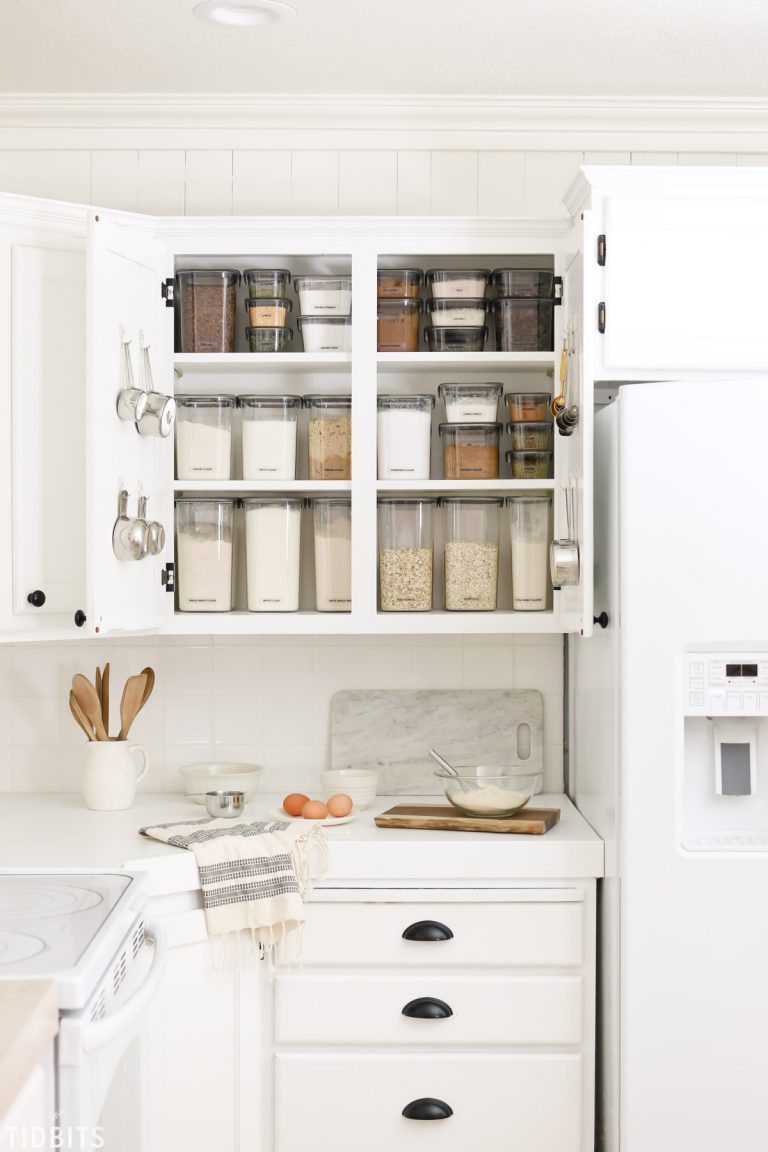
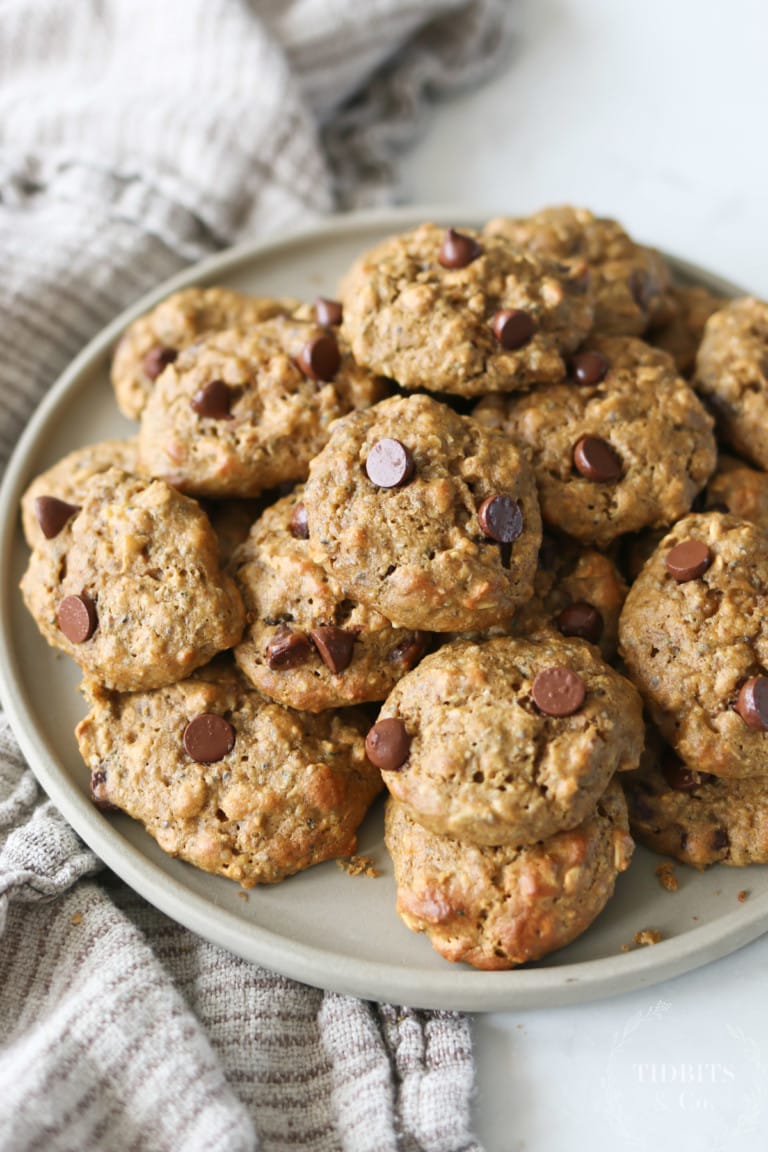
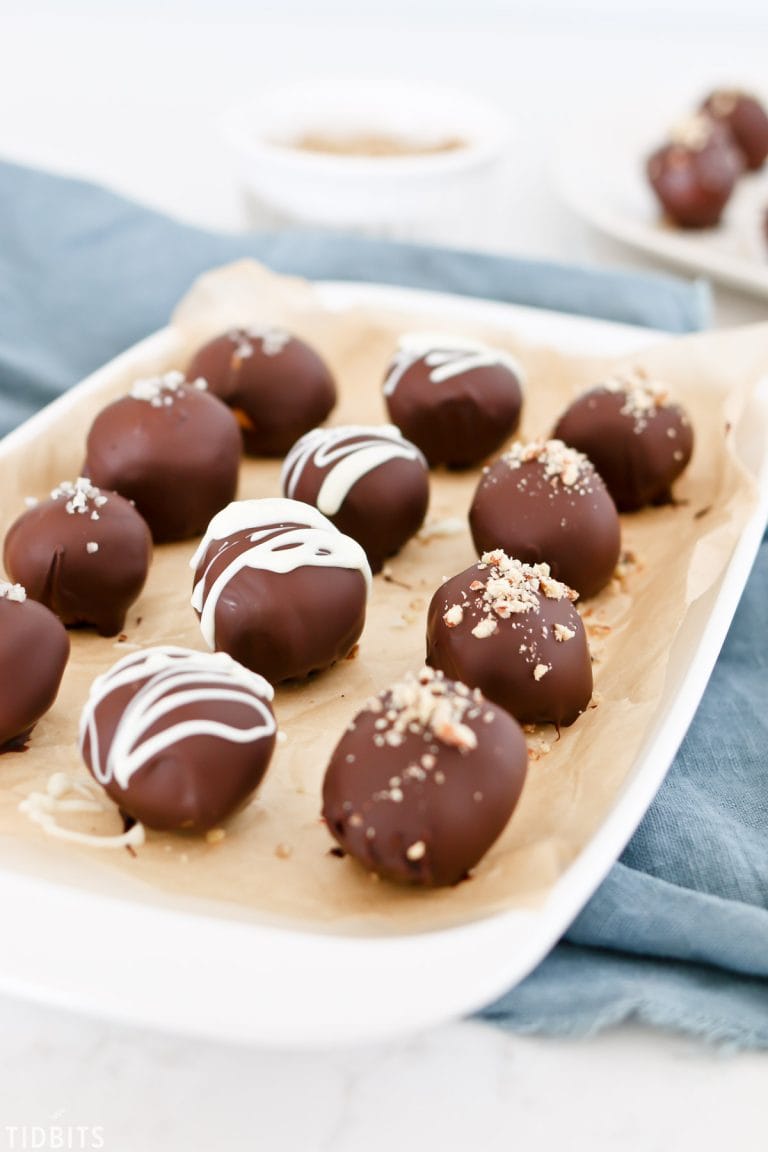
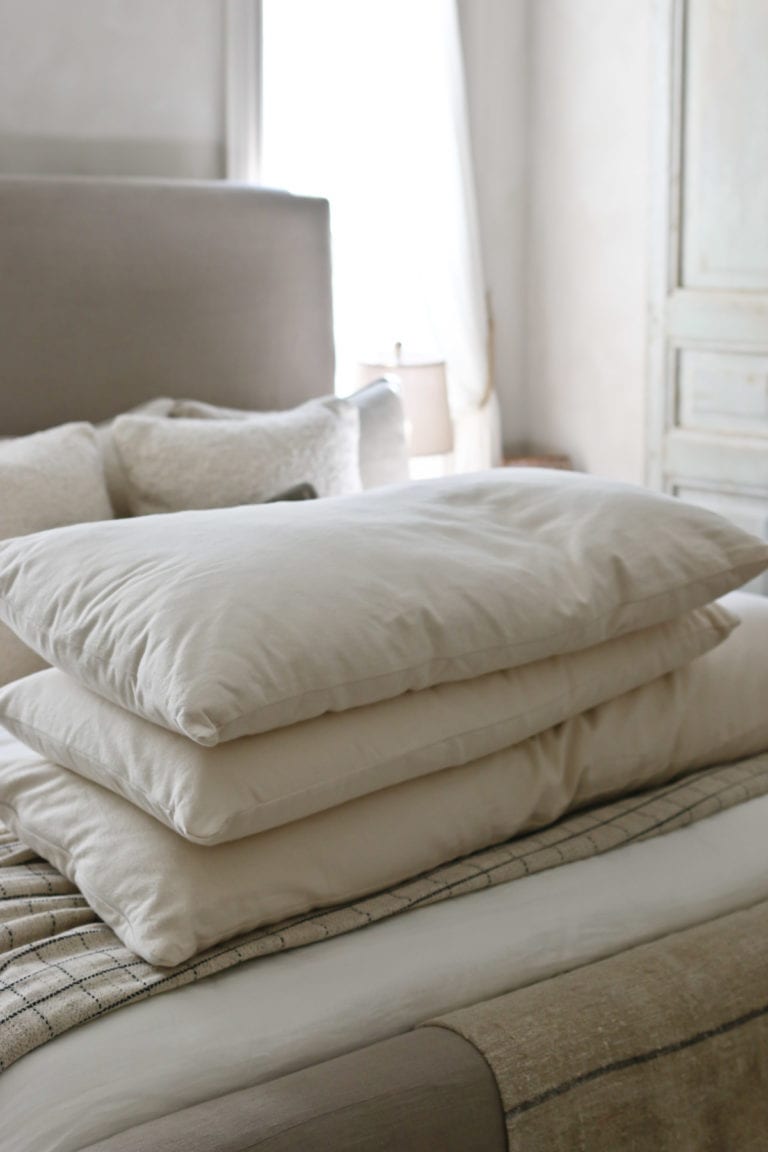

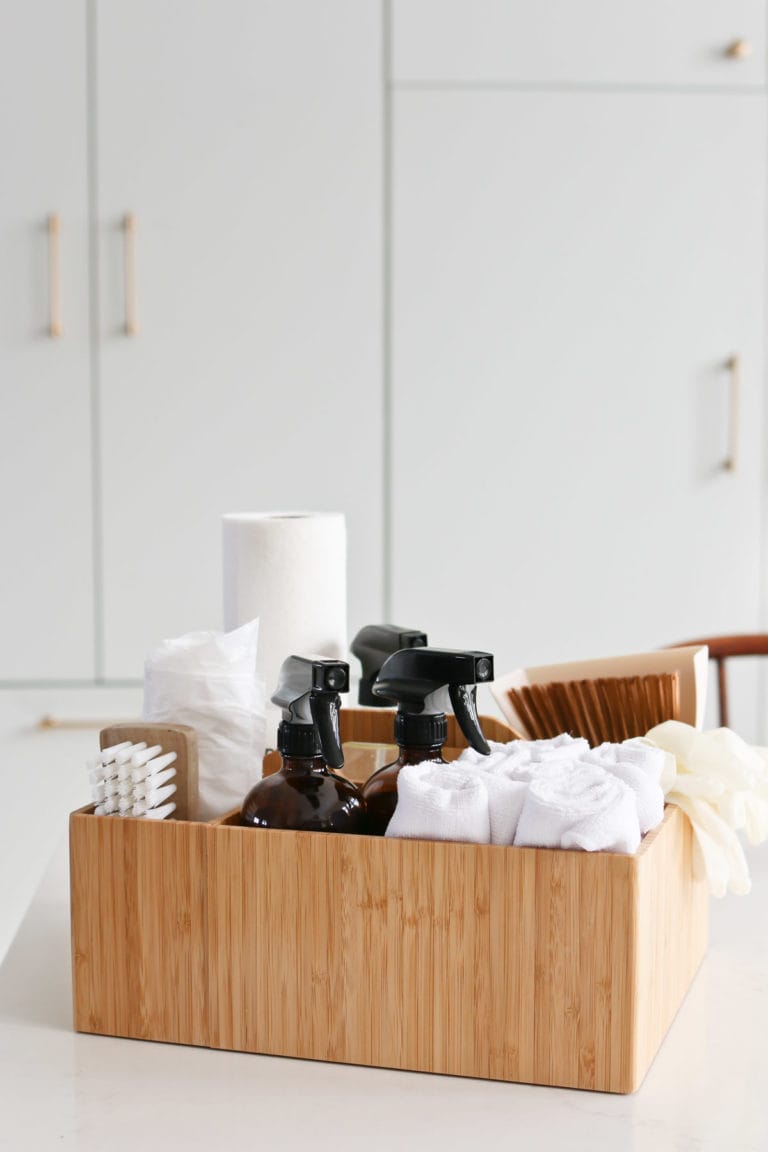







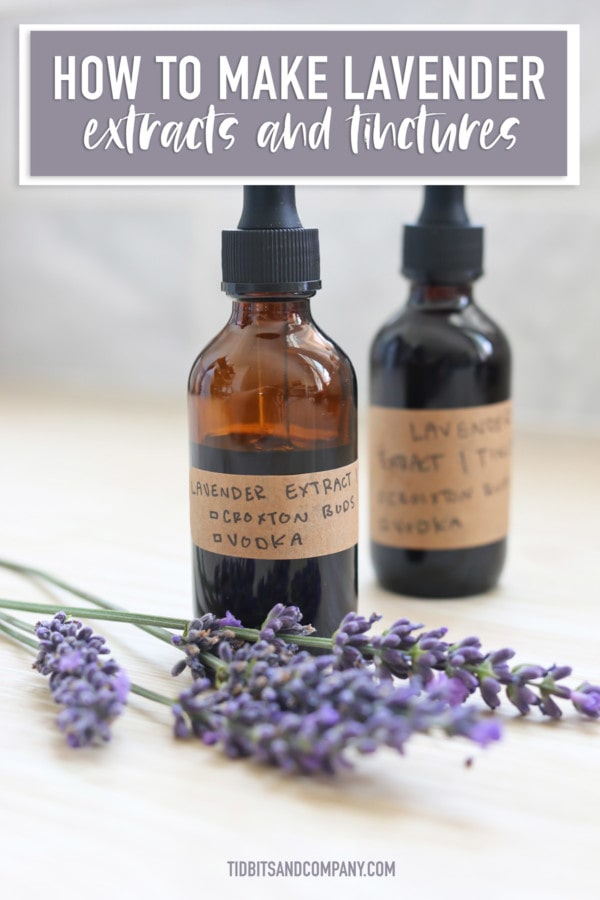
Free Printables!
Get instant access to the TIDBITS subscriber library full of free printables for the keeper of the home.
Discover more TIDBITS
Love this article? Make sure to connect with me on your favorite social platform below, and leave a comment so we can chat!